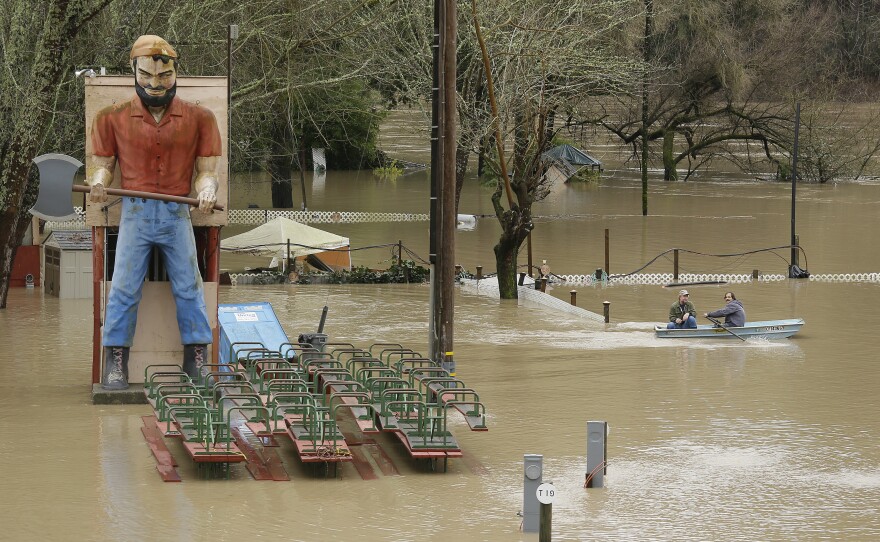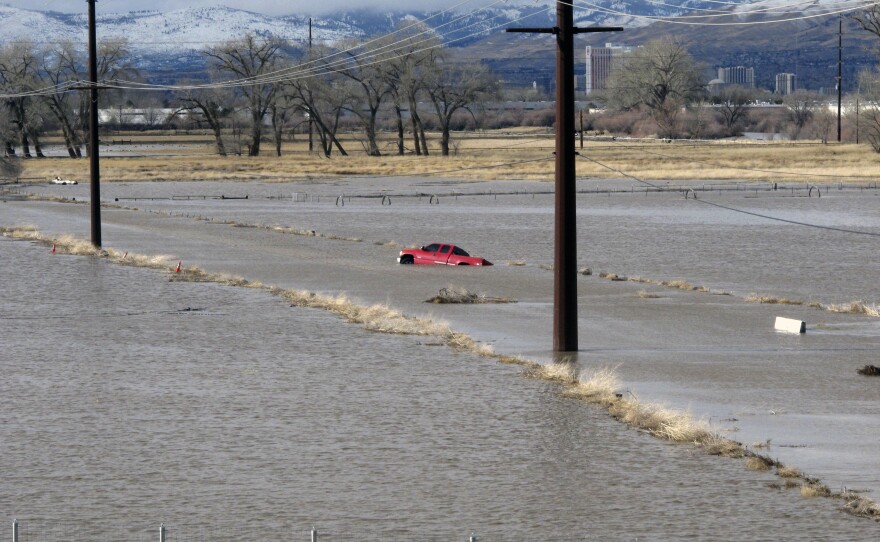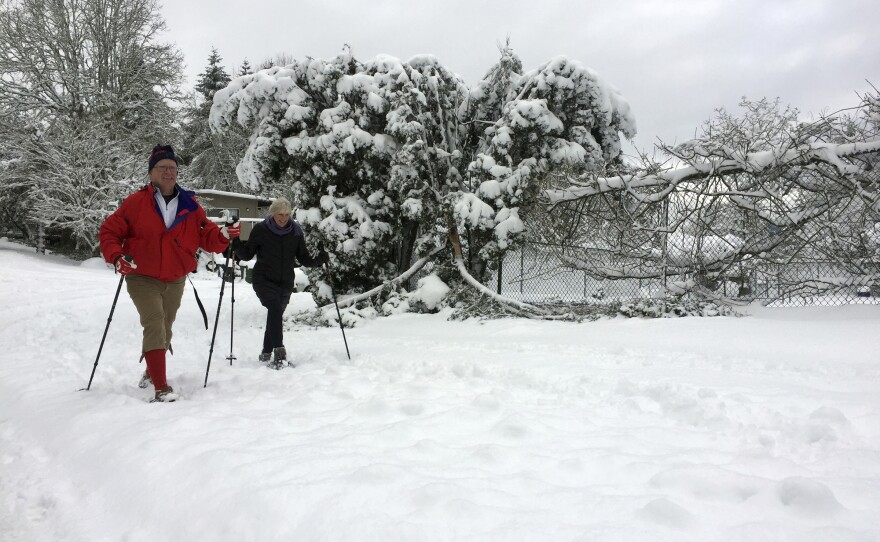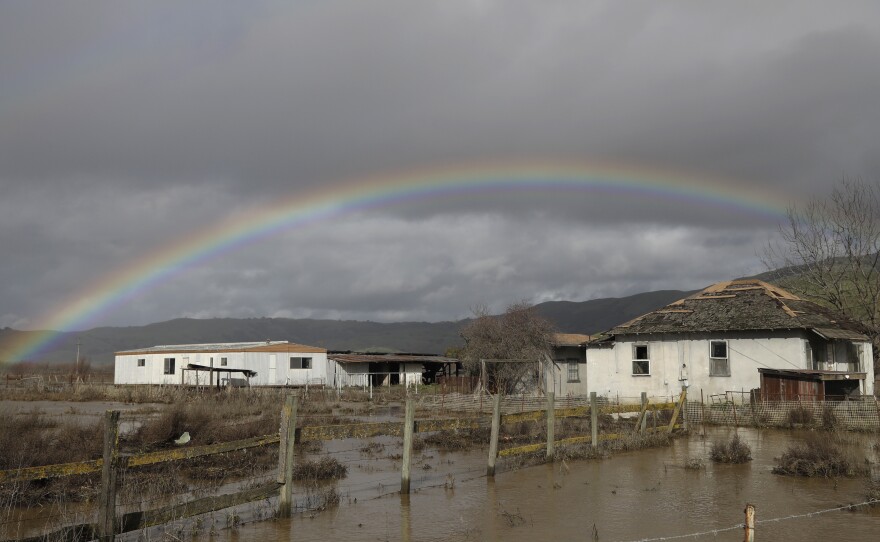


A storm system that dumped precipitation on multiple states in the West appears to be easing, but rivers have yet to crest and many communities are still digging out from record snowfall.
The Pacific Northwest and Northern California were hit hardest beginning Tuesday, when rain flooded roads and prompted evacuations in multiple communities. The storms were the second major weather system to hit the region this week, as we have reported.
But all that water has helped ease the region's severe drought, according to the weekly U.S. Drought Monitor report released Thursday. The report said a wet week contributed to "major drought improvements" in California as well as Nevada, Utah, Oregon, Idaho, Montana, Wyoming and Colorado.
A rainstorm in Southern California led the National Weather Service to issue a flash flood watch for Los Angeles County on Thursday, saying that rain during the evening "could possibly trigger mud and debris flows in the recent burn areas" where the risk of erosion is high.
A day earlier, the Los Angeles Fire Department said a 9,000-pound slab of concrete "from the foundation and retaining wall of the home detached and [slid down a] hillside," blocking a road. No one was injured.
On Thursday, a winter storm warning also remained in effect for part of the Sierra Nevada, and a coastal flood advisory was issued for the San Francisco Bay Area, where king tides exacerbated flooding.
In Sacramento County, Calif., 10 inches of rain fell in the foothills and 6 feet of snow in the mountains, reported Bob Moffitt of Capital Public Radio in Sacramento.
Moffitt also reported that 20,000 people in Placer County had lost power as of Thursday, and he spoke to county Emergency Services Manager John McEldowney, who said people are struggling to keep their driveways and rooftops clear. "You want to keep huge amounts of snow off your roof because there have been cases where feet and feet and feet of snow on roofs have caused cave-ins," McEldowney said.
In the mountains of Northern California and Nevada, the National Weather Service also warned there was a high risk of avalanches.
Farther north, snow blanketed much of Oregon and more than 37,000 people in the Portland area lost power. Oregon Public Broadcasting reported that "on average, [Portland] and surrounding communities received 8-12 inches of snow" on Tuesday and Wednesday.
"The reports are that there were hundreds of cars abandoned on the highways and dozens, if not hundreds of people stranded in their vehicles," Portland Police Sgt. Christopher Burley told the member station.
The station reported:
"The NWS had a tough time just keeping up with the changing forecast as the snow fell late Tuesday, said ... meteorologist Clinton Rockey. " 'What we saw across the region was a nightmare unfolding for the area. Snowfalls in the metro area, boy I tell you, it was really a lot of fun for us to figure out what's going on,' he said. "The metro region saw the unusual phenomenon of what's known as 'thundersnow,' which is what it sounds like: a thunderstorm during a snowstorm."
Not even skiers could catch a break. In California and Nevada, so much snow fell on ski resorts that they couldn't open. Woodward Tahoe ski area in California said it was closed Wednesday due to "Snowpacalypse2017." On Thursday, Nevada's Mount Rose remained closed "due to complications from the storm."
The snow was a relief for at least one living thing, however. At the Oregon Zoo, a polar bear appeared to be having a pretty great day.
Copyright 2017 NPR. To see more, visit http://www.npr.org/.






